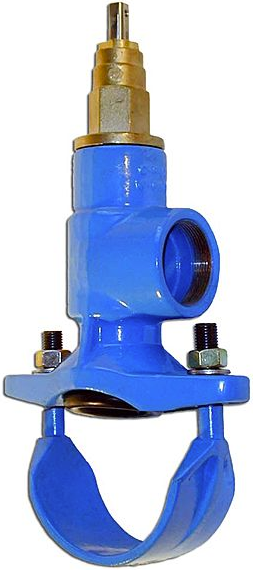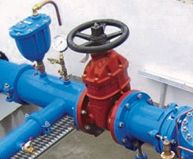The FlowControlDevices act like switches in the network (on/off), but do not form subnet controllers.
|
|
|
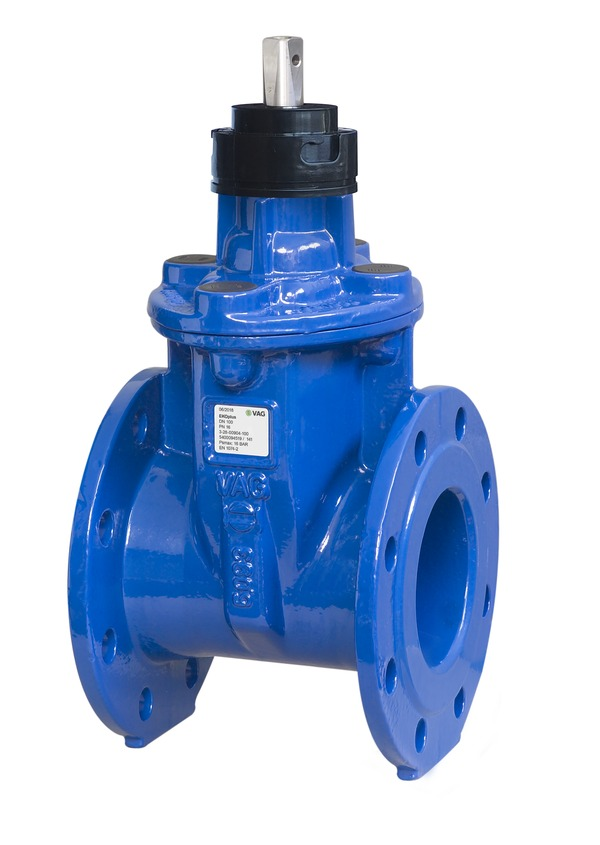 Valve 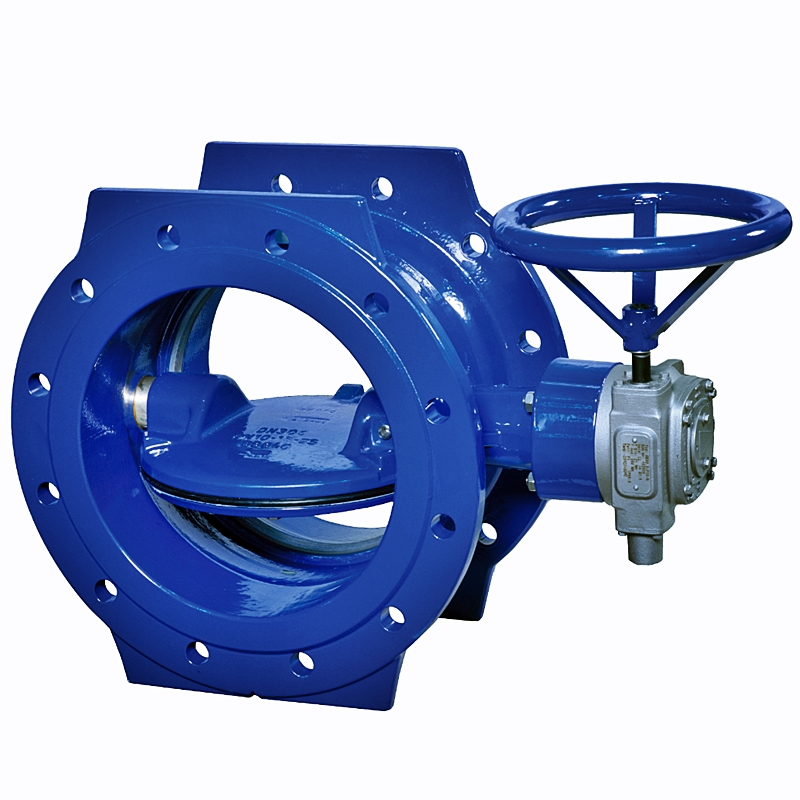 Flap |
Shut-off valve
The following basic types of shut-off valves are available in the domain networks with pipelines:
•Valve
•Flap
•Ball valve / tap
•Valve
The distinction is made on the basis of the closing mechanism.
The gate valve (also water gate valve) is a fitting used to completely open or close the entire flow cross-section of a pipe. This is a wedge which can fully open and close the cross-section by lifting and lowering. Attention, cavitation can occur in the water when partially opened!
The shut-off flaps have a flap lying in the axis, which can be closed by rotation. The cross-section is always reduced with flaps (horizontally and vertically).
The ball valve is also used in plants. Basically, it is a pierced ball which can be opened or closed by rotation.
The valve has a closing element (cone, ball, etc.), which is located in the direction of flow and can be pressed into the underlying opening.
In facilities, the shut-off valves also serve the maintenance of objects.
|
|
|
|
|
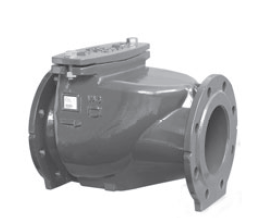 Check valve (VAG) 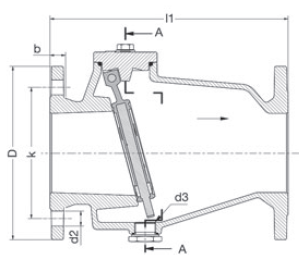 Section and flow direction from left to right (VAG) |
Check valve
Non-return valve (ball, diaphragm)
Non-return valves are available in various designs, which are often also used as technical designations. For this reason, the umbrella term, which states that only one flow direction is permissible, was chosen.
These fittings are always used in connection with a construction object e.g. pump station, reservoir, transfer structures etc.
|
|
|
|
|
|
|
Tapping slider / Tapping saddle
All tapping fittings are used in connection with the end-user. You always have a saddle (FittingElement > Saddle) which is drilled and mounted to an existing pipe. Only used for connections to the supply lines (DistributionLine), connection lines (ServiceLine) or internal connection lines (InternalServiceLine).
|
|
|
|
|
|
|
Facility valve
Shut-off device within a facility.
|
|
The zone valve ZoneValve was not implemented, because it can be marked via an additional attribute. At the same time, this can also be directly identified via the network.





